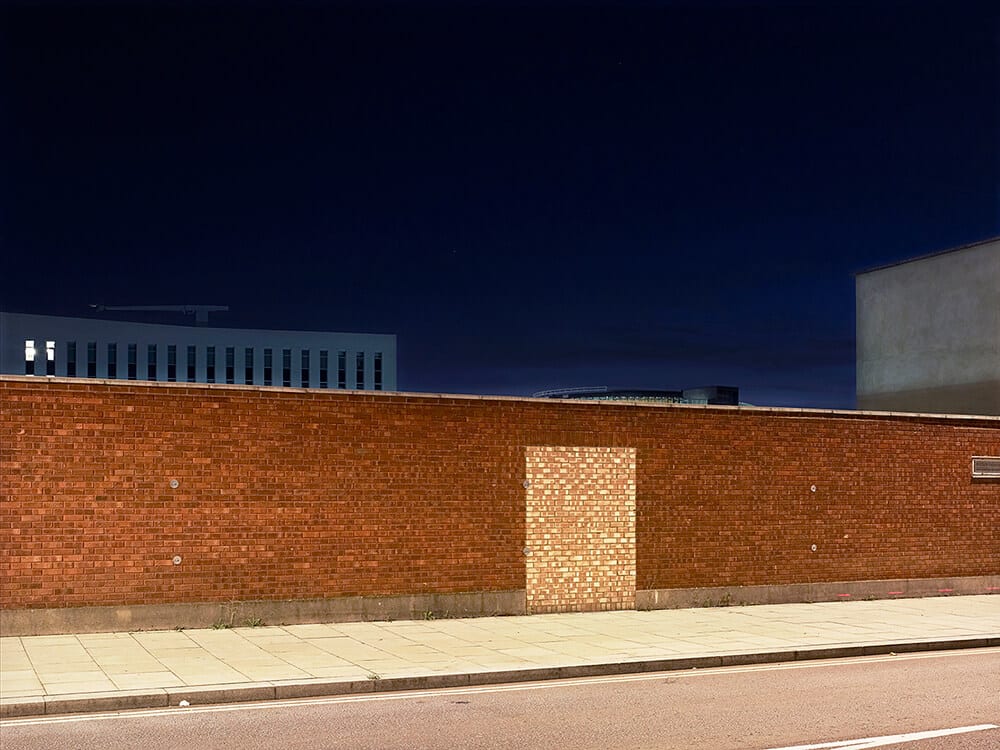INTERVIEW
Finding the Extraordinary in the Everyday
WITH POLLY TOOTAL
An interview with Polly Tootal
Every year we run a Series Award through which we celebrate series of work from emerging photographers. The winner receives a solo exhibition and this year we’re collaborating with Galerie Intervalle in Paris – a global hub for photographic practice, hosting exhibitions, talks and events, as well as representing 10 of the most exciting emerging artists in the photographic sphere. The Series Award is open to all Life Framer Members.
In the lead up to the deadline for this year’s award (31 August 2019) we’re sharing a number of articles that explore the work of Galerie Intervalle’s represented artists…
Polly Tootal: Unknown Places | Exhibition at Galerie Intervalle, 9 January — 19 March 2016
Polly Tootal’s work considers the way in which abandoned industry mixes with functioning architecture and development, spaces left awaiting completion or areas of recent renewal. The Modern British landscape is represented as rich with human activity, yet bereft of human presence. Obscured by a lack of context, yet strangely familiar, Tootal’s subjects are presented in such a way to highlight their eccentricities, focusing our gaze on the peculiar of their architecture and terrain.
Here we ask Polly about her approach and the atmospheres she seeks to create…
Why did you choose to go with a large format camera? What about it appeals to you?
I really love the work of the New Topographic photographers of American and Germany, people like the Bechers, Lewis Baltz and Stephen Shore, they all used 5×4 and 8×10 view cameras and I wanted to discover this process in my own work. I studied editorial photography at the University of Brighton, my tutor was Magnum photographer Mark Power, he is a social documentary landscape and portrait photographer who shoots large scale photographs, and his work influenced me. I adopted a similar way of working at the time and continued to photograph in this way. The slow, considered process and image quality of large format photography captivated me.
How long does it generally take you to set up and complete a shot?
It can take from between 10 minutes to an hour or more depending on the light and how easy or difficult it is the find a good position to shoot from.
Why did you choose to leave people out of your landscapes/cityscapes of Britain? Is there something special you’re wanting the viewers to see from their absence?
In a few of my photographs you will notice tiny figures in the distance, but mostly my images are devoid of people. I wait for them to disappear in an attempt to strip the scene of the energy they would add if you could see them prominently, also it’s a way of heightening the impact of the architecture or space. It is important, though, that a suggestion of human activity is present as it adds something to the potential drama, I look for scenes with a certain tension of which sometimes can be jarringly false, like a stage set. Yet when viewed in this way we’re able to see the environments where we live, work and play more accurately as deliberate constructions of our communities. The images invite us to look carefully at the mundane choices that are being made at every step along the way towards that cultural creation: the choice of building materials, the positioning of rubbish bins and height of security fences, the decision to include (or not) natural elements like trees, as well as the distance placed between neighbours.
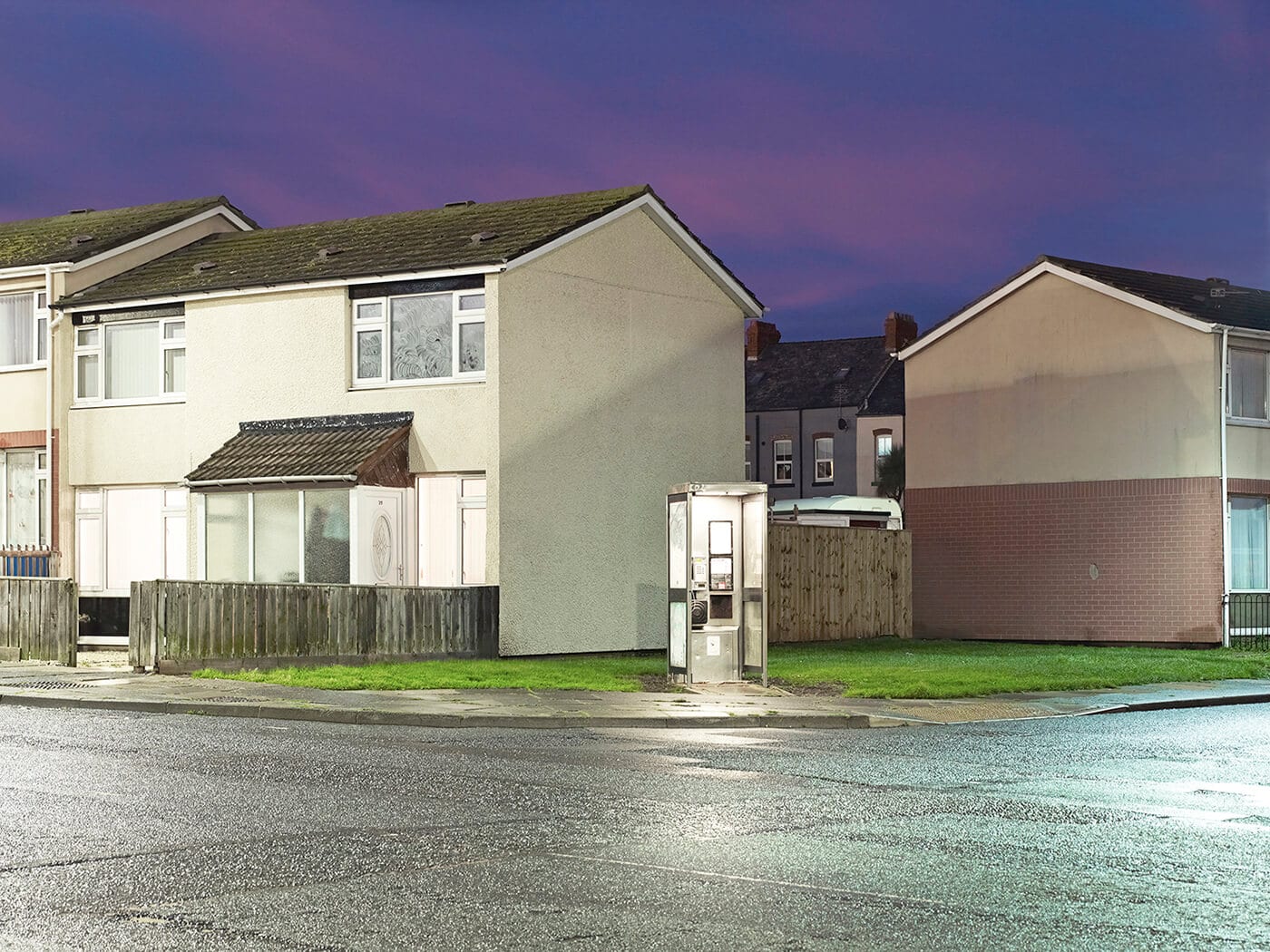
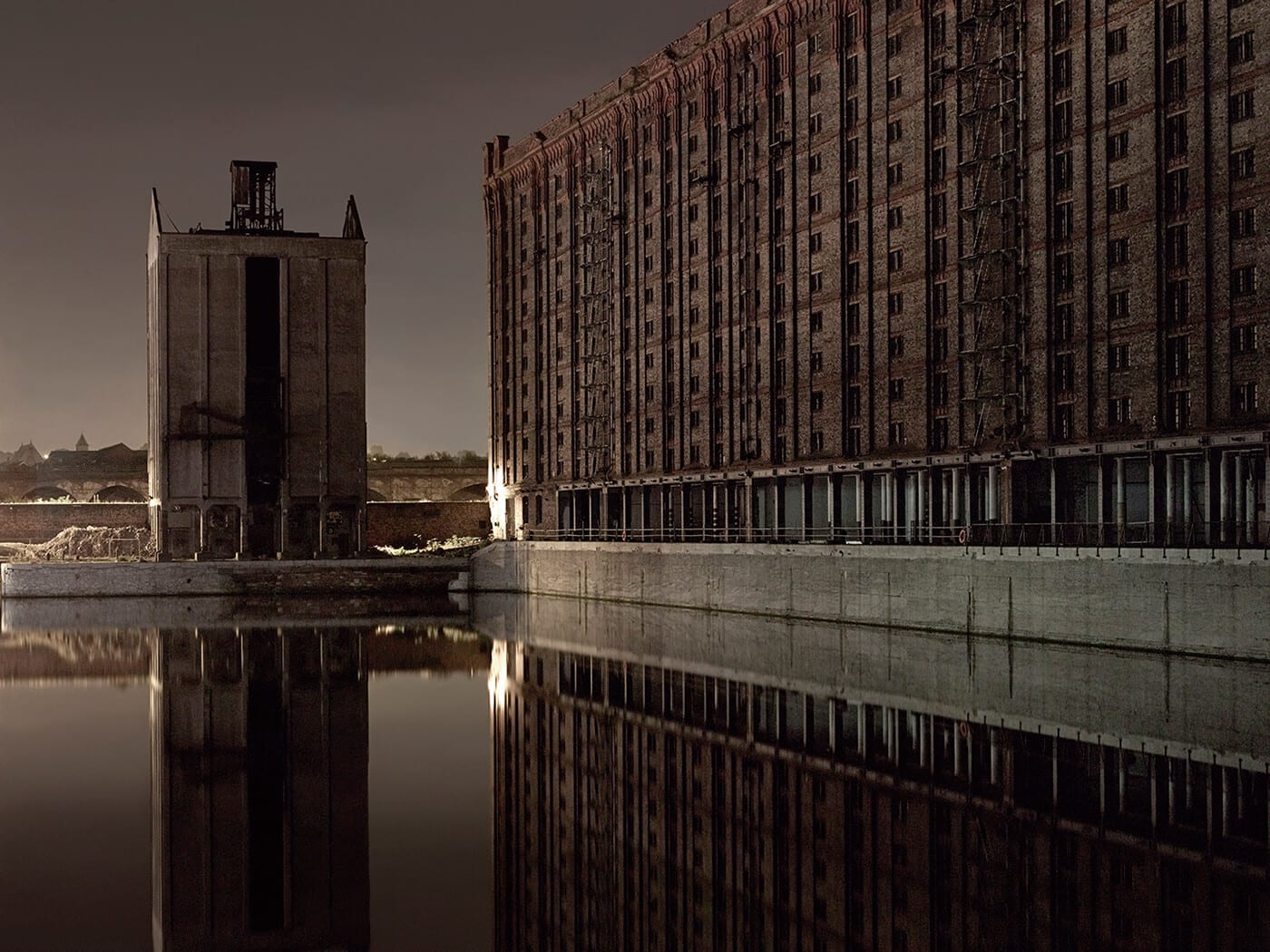
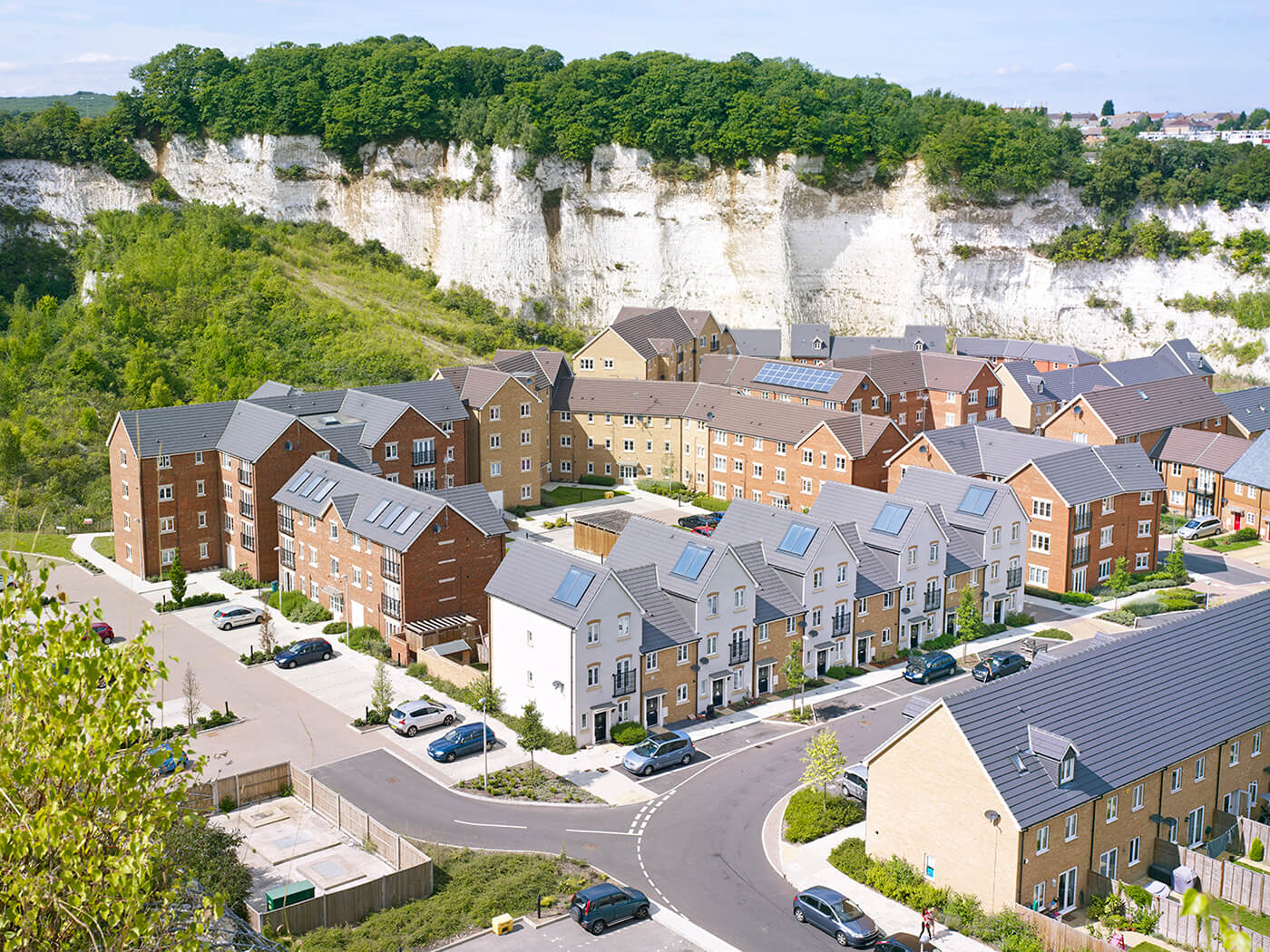
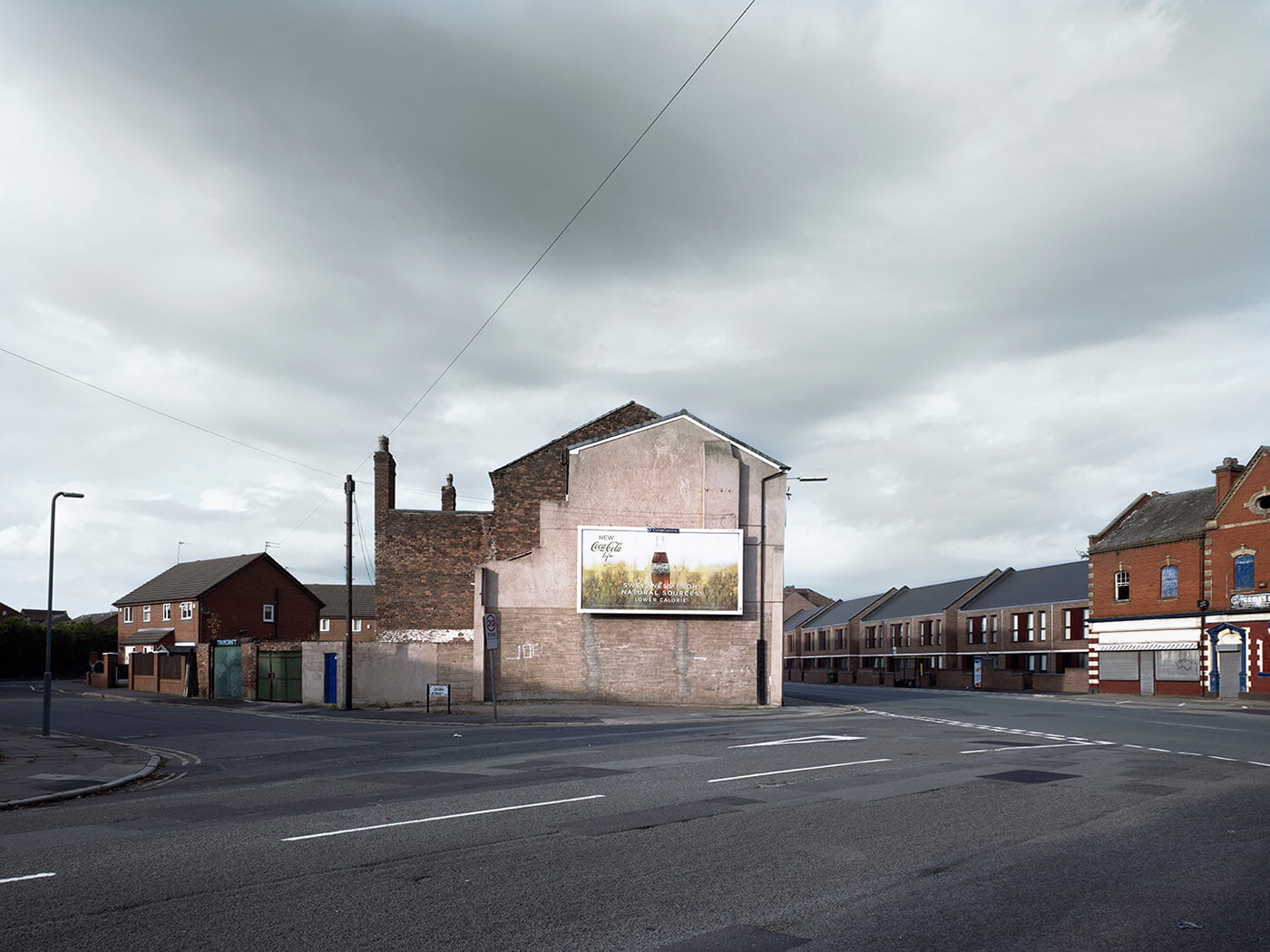
Many of your shots are of places we pass through but rarely inhabit. What do you look for when setting up your shots? What provides you inspiration, or tells you “Yes! This is the place!”?
I travel on random journeys to anywhere I feel like, through towns and cities I want to see. I love maps and will study them to look at the terrain. It could be the grid system of Milton Keynes, the marshy flats of the Essex coast or a northern hilly city like Sheffield that captures my attention. I then go on long dedicated journeys in my car, alone, to search for potential photographs, sometimes for a day, sometimes for several days. The particular scenes I photograph are chosen instinctively, the subject matter, composition, geometry, light, atmosphere and colour will all suddenly come together and make sense.
It’s been said that your images often lie on thresholds and boundaries, sometimes between urban and rural, leisure and industry, lived-in and abandoned, etc. Is there something about these intersections that fascinates you?
It’s the places we live in, work in and travel through that interest me the most – the places that make up the landscape of everyday. The ‘non-places’ or spaces of transience like roads, stations, supermarkets, parking lots and shopping centres. I’m looking at the quotidian landmarks of our contemporary civilization. I attempt to make images everyone can relate to, depicting places they have seen before in their own variations, it could be their street corner or the underpass they travel through everyday. I find these places poetic. I attempt to subvert these ‘ordinary’ spaces, transcending their meaning and maybe telling a story. My photographs investigate the forms and structures of spaces, as well as their details. I’m interested in looking at the contradictions between intention and actual use, as well as the layers of historical change. Hopefully my images invite the viewer to take time to discover and reflect upon what spaces do to us and what we do to spaces.
In the end, what would you like your viewers to come away with?
I hope people look at my pictures and are intrigued in some way, I can’t ask for more than that.
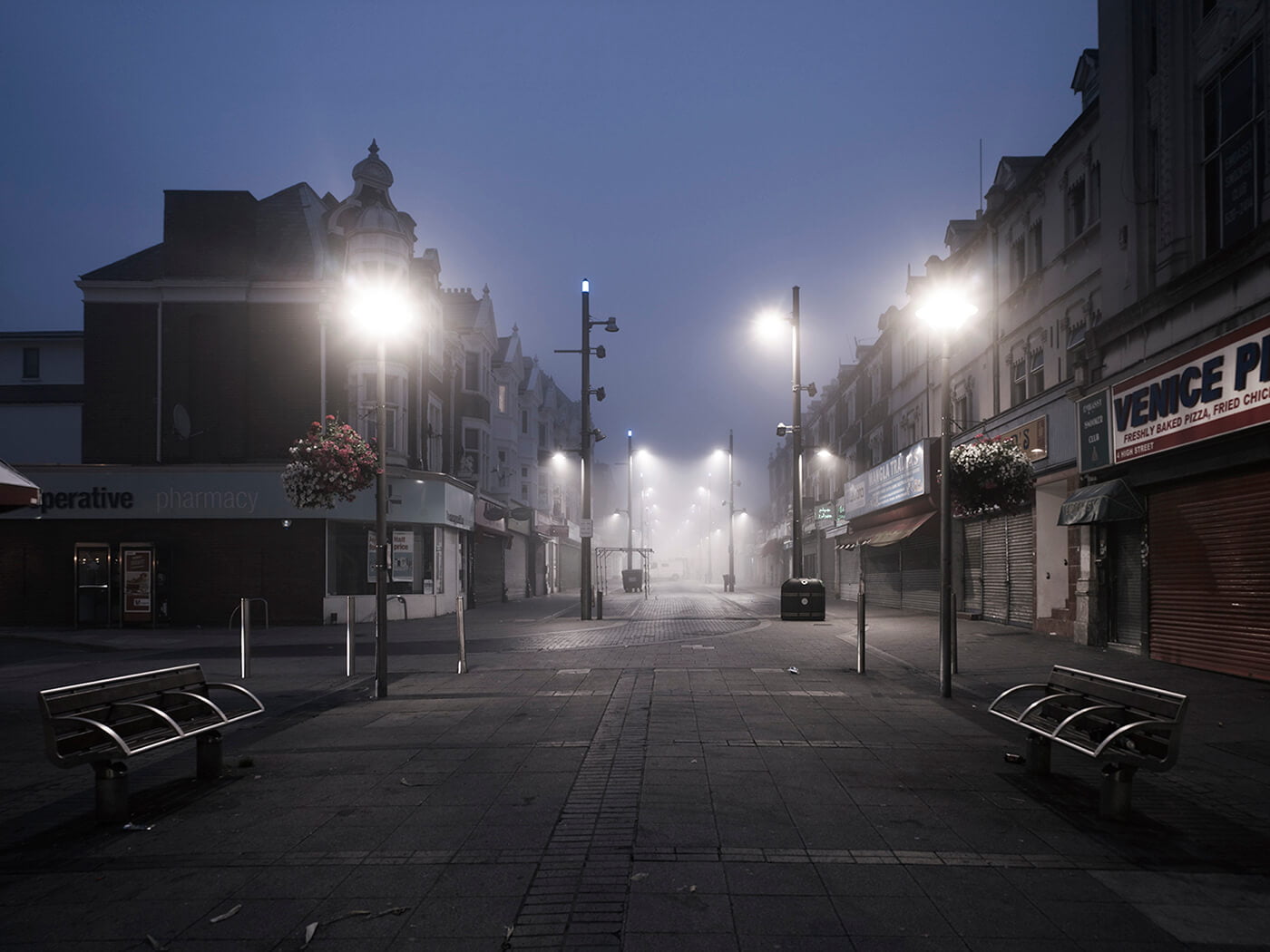
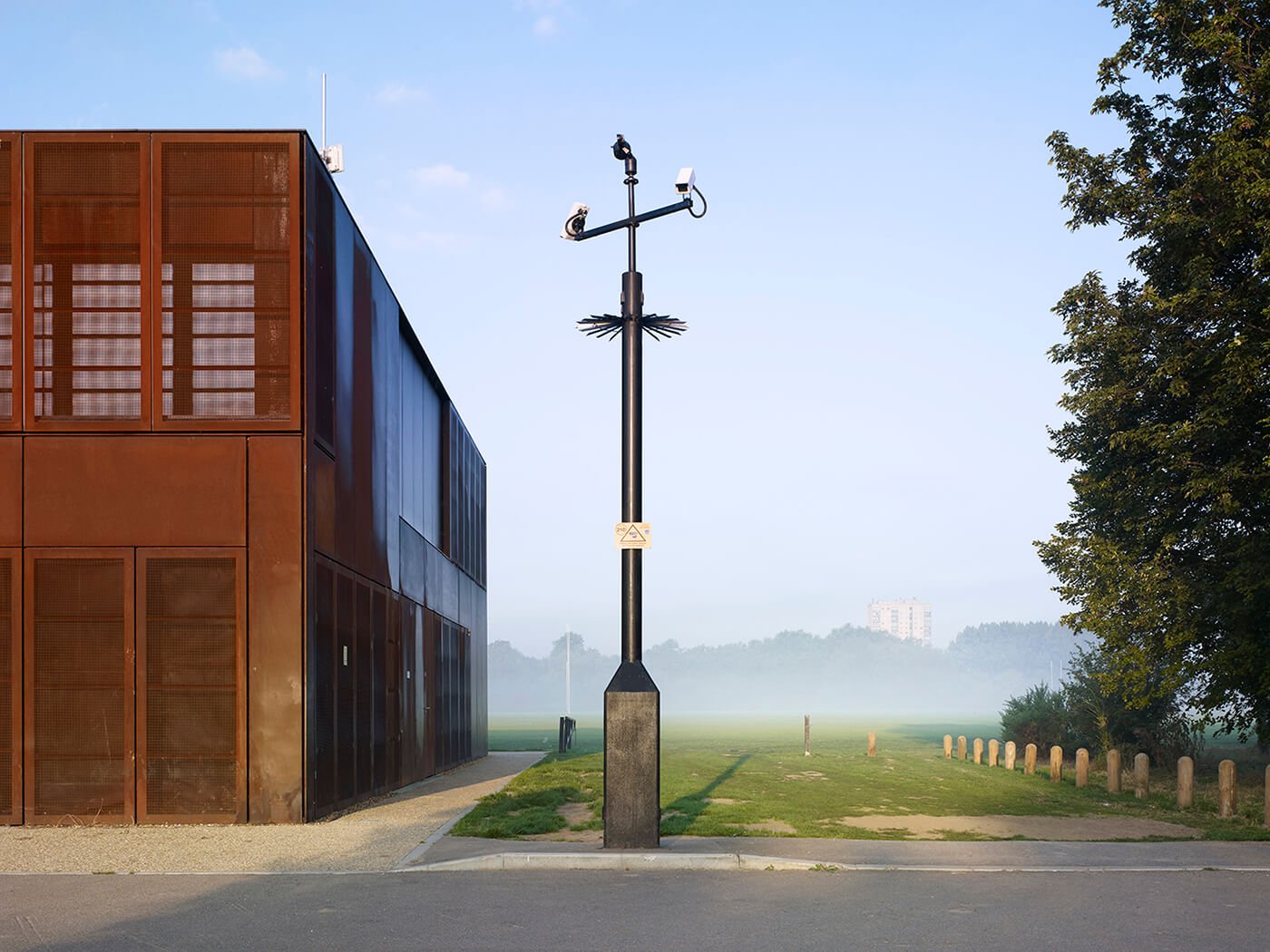
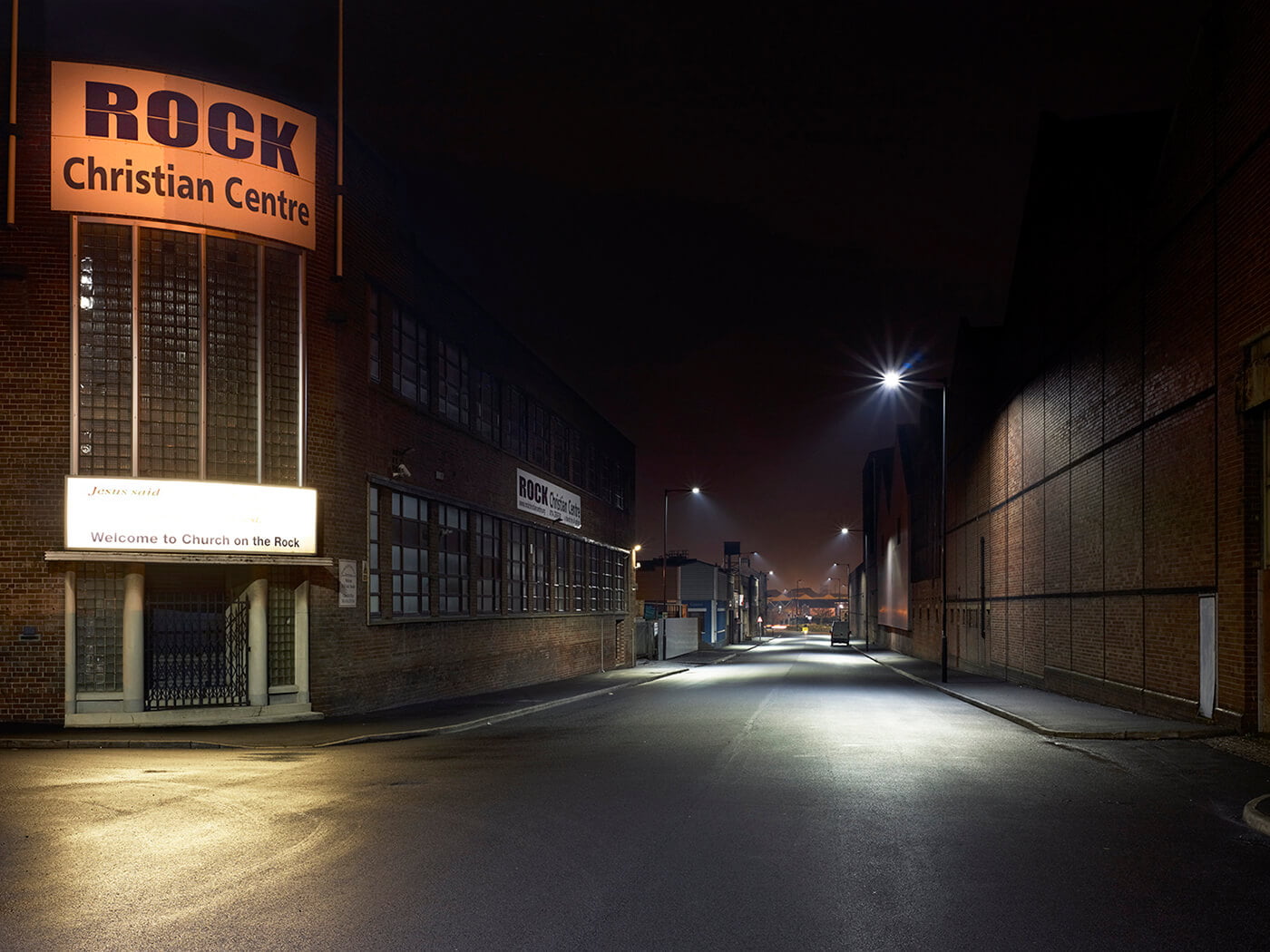
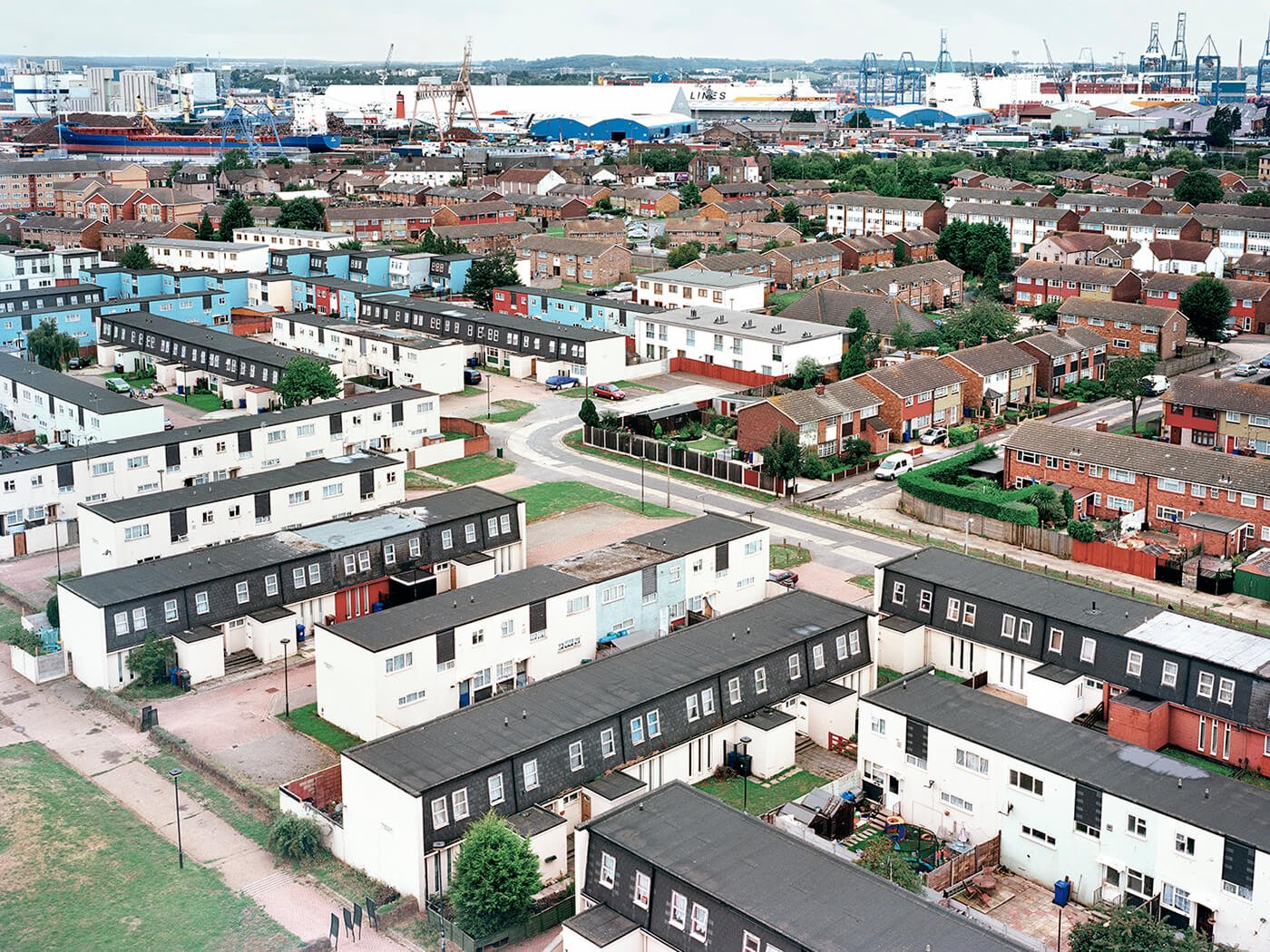
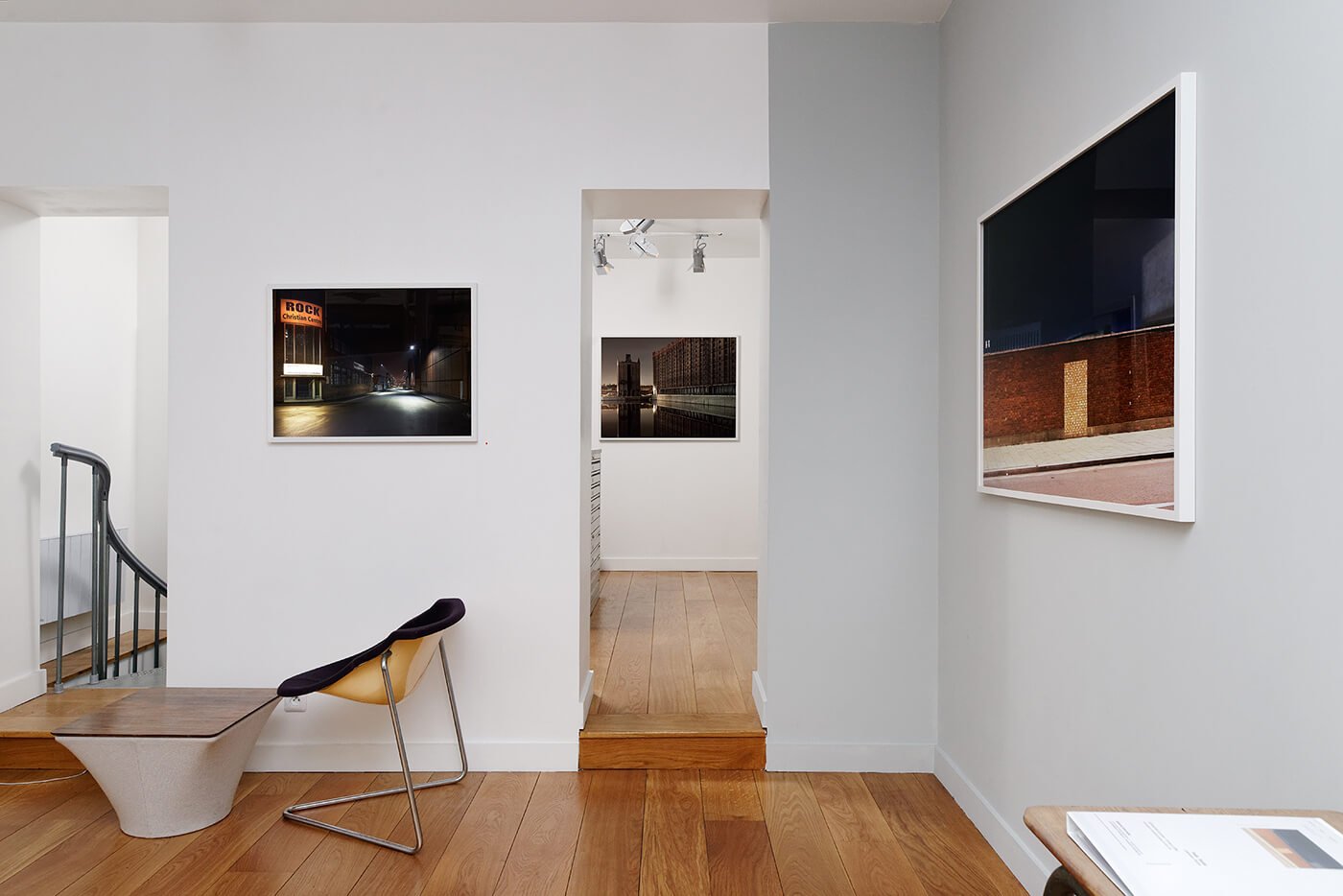
Unknown Places at Galerie Intervalle, March 2016
All images © Polly Tootal.
See more at www.pollytootal.com and follow her on Instagram: @pollytootal
